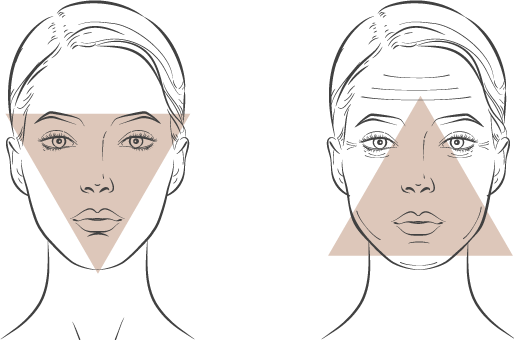Sagging skin
Sagging skin can be a result of numerous factors depending on the individual including:
- Natural ageing process
- Weight loss
- Other medical reasons
With age, your body loses collagen and elastin and the connective tissues and muscles begin to sag. The gravitational descent of the skin and underlying muscle can create major facial skin laxity. Loss of definition as you age can occur anywhere on the body however, the most common areas to experience sagging skin is on the face, neck, abdomen, and arms.

WHAT CAUSES SAGGING SKIN?
Collagen is the most abundant protein in the body and is found in the bones, joints, and tendons. Elastin and collagen fibres are what gives the skin suppleness and strength and the number of fibres we can produce decreases as we age.
Skin also has a layer of fat just below the surface (subcutaneous layer) which contributes to our facial structure and as we get older this layer begins to thin and shrink.
As our skin produces less collagen and elastin it often causes the skin to sag and drop in various areas of the body.
Additional factors may cause sagging skin such as hormonal changes and lifestyle (sun exposure and smoking).
SIGNS OF SAGGING SKIN
The first signs of sagging skin are loss of definition in facial contours and you may start to notices wrinkles around the area.
For a visual reference on the face you can use the triangle of beauty. As we age the signs of volume loss and sagging skin mean the triangle is inverted and we begin to notice:
- Wider jawline
- Flatter cheeks
- Wrinkles around the forehead and brow areas
- Hollowness under the eyes
- Sunken temples
- Corners of the mouth begin to point downward.
- Excess skin under the chin or neck
- Visible bones and veins in the hands

MANAGING SAGGING SKIN
Excessive amounts of sun exposure can cause damage to our dermis which speeds up the collagen and elastin breakdown. These elements along with our fatty layer are important for skin structure so when compromised can influence volume loss and as a result lead to sagging skin. Avoid excessive sun exposure and always wear SPF to prevent sun damage to the skin.
Ensure you have a balanced diet. This not only provides your skin with nutrient rich benefits but also ensures you maintain a healthy weight minimising fluctuation in the body and stretching skin.
Some of the below cosmetic treatments might also assist in managing sagging skin. It is essential to consult with your healthcare professional before undertaking any cosmetic treatments to ensure the treatment is suitable and tailored to your individual needs.
Some cosmetic treatments for sagging skin may include
- Micro-focused ultrasound treatments
- Surgical treatments
- Laser treatments
- Radiofrequency treatments
- Dermal fillers

